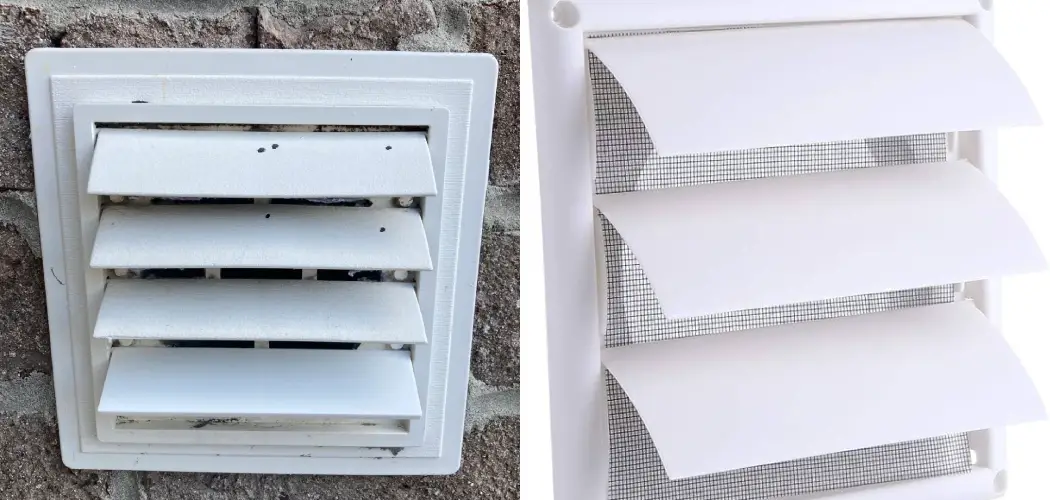Experiencing the annoyance of a flapping exhaust fan can disrupt the tranquility of your space and even lead to concerns about the fan’s efficiency and longevity. The rhythmic flapping sound can arise from a variety of factors, including air pressure differentials, obstructions, or worn-out components.
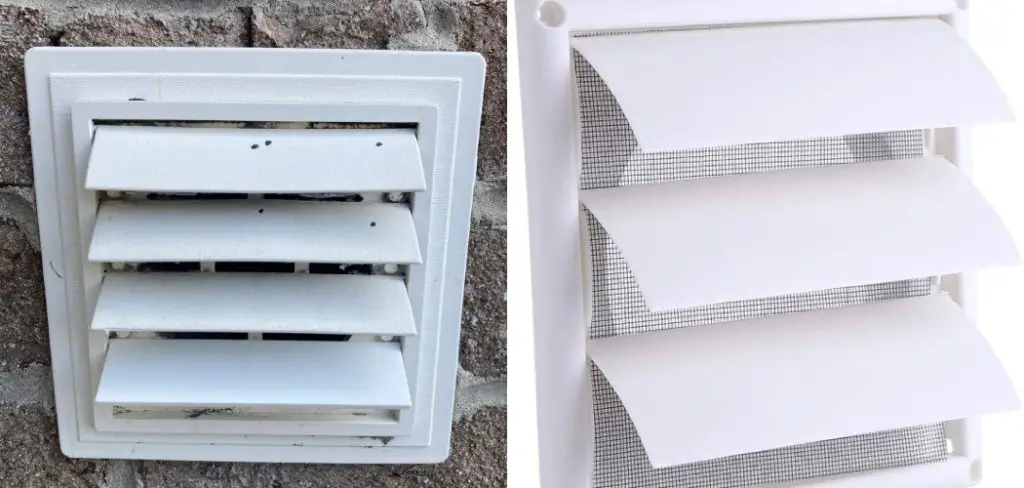
Whether in your kitchen, bathroom, or any area where exhaust fans are installed, learning how to stop exhaust fan flapping is essential for restoring a peaceful environment and ensuring the optimal functionality of the fan. In this guide, we will delve into the nuances of addressing this issue, offering practical solutions and step-by-step instructions to help you silence the flapping noise and restore your space to its tranquil state.
Exhaust Fans and Their Importance
Exhaust fans are an important part of any home or business. Not only do they help to keep the air clean and healthy, but they also guard against overheating by venting hot air away from high-heat areas. Without the proper maintenance, however, exhaust fans can become noisy and flapping–causing a disruption in your otherwise peaceful home or workspace. Althoguh the problem can be annoying, there are steps you can take to stop your exhaust fan from flapping.
Start by checking the fan blades for any signs of damage such as warping or bent edges. If so, replace them with new parts from the manufacturer. Additionally, tighten all loose screws and make sure they are firmly secured in place; this will ensure the blades are properly balanced.
Another potential cause of exhaust fan flapping is an unbalanced motor. To remedy this, you’ll need to open up the fan housing and adjust the position of the motor’s balancing weights accordingly. If these weights have worn out, they should be replaced with new ones from the manufacturer as well.
The Issue of Exhaust Fan Flapping and Its Causes
There are several common causes of exhaust fan flapping. The most common is a loose fan blade, usually caused by an inconsistent air flow or something blocking the blades and causing uneven thrust. In some cases, this can even cause the fan to vibrate and create a loud noise that’s difficult to ignore. Other times, it may be because the motor or fan assembly is faulty and needs to be replaced. Although it’s not a terribly common issue, it can be quite annoying when it occurs.
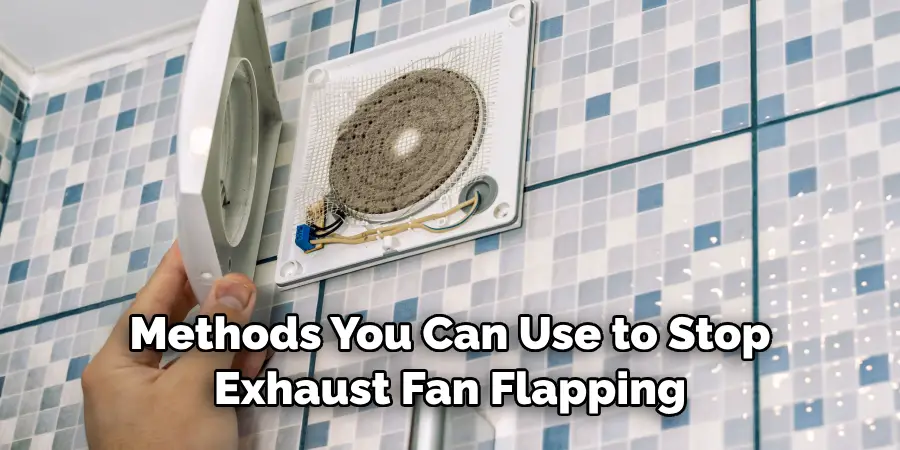
Fortunately, there are several methods you can use to stop exhaust fan flapping and get rid of that irritating noise. First and foremost, check for any objects blocking the blades or preventing a consistent air flow. Once the area is free from obstruction, make sure all components and connections are in order. If you find any loose parts or bolts, be sure to tighten them up properly.
In some cases, it might make sense to install a fan balance kit for added stability. These kits allow you to adjust the weight of the blades so that they’re all in balance. This can help reduce vibrations and prevent future problems with flapping.
10 Methods How to Stop Exhaust Fan Flapping
Method 1: Clean and Remove Debris
A common culprit behind exhaust fan flapping is the accumulation of debris, dust, or dirt on the fan blades. Over time, this seemingly innocuous buildup can wreak havoc on the delicate balance of the fan’s operation, resulting in the persistent annoyance of the flapping sound. To effectively address this issue, embark on a journey of thorough cleansing. Begin by switching off the exhaust fan and proceeding to meticulously remove the fan cover. With utmost care, direct your attention to the fan blades themselves.
Method 2: Balance the Fan Blades
In the intricate choreography of an exhaust fan’s operation, balance emerges as a critical conductor. Imbalanced fan blades not only disrupt the fluidity of airflow but can also culminate in the dreaded flapping noise.
Adopt the role of an observer as you cast your gaze upon the fan blades in motion. Herein lies the key to your diagnosis – identify any blades that exhibit a perceptible dip, trailing behind their peers.
Engage in the delicate art of counterbalance. Introduce adhesive weights or even the artful application of tape to the upper side of the blades that appear lighter. Approach this step with cautious experimentation, starting with smaller weights and gradually increasing until the balance is delicately achieved.
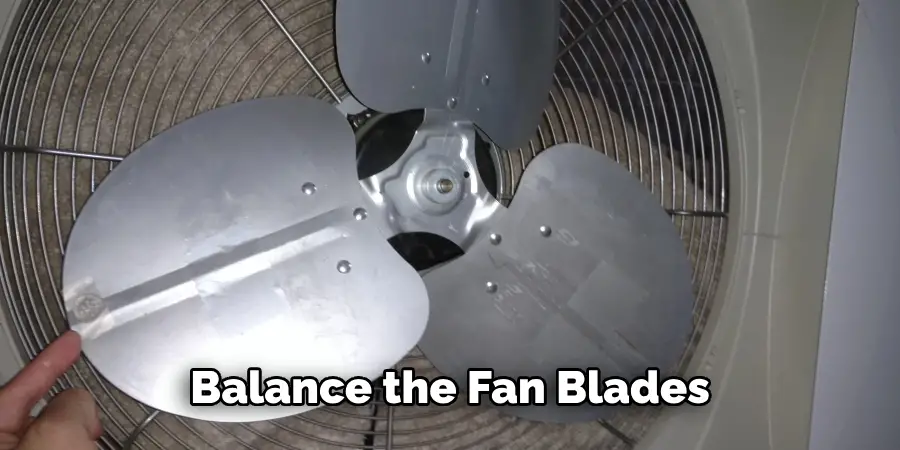
Method 3: Tighten Loose Screws and Fasteners
Within the symphony of moving parts that compose an exhaust fan, the resonance of vibrations can be a contributing factor to the flapping sound. A meticulous inspection of the fan assembly may unveil a revelation – loose screws and fasteners that have been beguiled by the siren song of vibrations.
By embracing the role of an investigator, trace your fingers along the fan’s components, scrutinizing each screw, nut, or bolt. In this quest for stability, the judicious employment of appropriate tools to tighten these components manifests as a transformative act. With each snug twist, vibrations are stifled, and the harmonious operation of the fan is poised for restoration.
Method 4: Check for Duct Obstructions
Turbulent airflow, a harbinger of the flapping noise, often finds its genesis in the form of obstructions nestled within the exhaust duct. Cast your attention to this vital conduit, an agent entrusted with ushering the expelled air to freedom. Yet, with freedom comes responsibility – the responsibility to ensure that the path remains unencumbered.
With intentionality, engage in an inspection, eyes attuned to spotting any debris, bends, or disarray that might disrupt the smooth flow of air. With each obstruction meticulously addressed, you not only mitigate the potential for flapping but also preserve the efficiency of the exhaust fan’s operation.
Method 5: Inspect and Replace Damaged Parts
An exhaust fan is a harmonious ensemble, an orchestra in which each component plays a vital role. Yet, as with any orchestra, wear and tear are inevitable guests. In your role as conductor, inspect each part with scrutiny, identifying the wear and tear that could foster the flapping sound.
Bearings, motor mounts, belts – each plays a pivotal role. Should your inspection unearth the presence of damaged components, embrace the concept of renewal. Replace these components with counterparts imbued with the vitality of youth, thus orchestrating a symphony of smooth operation.
Method 6: Lubricate Moving Parts
Within the heart of an exhaust fan lies a realm of moving parts – a realm that craves the tender touch of lubrication. When friction and vibrations rear their heads, the flapping sound often follows suit. In this narrative of restoration, the manufacturer’s guidelines stand as your compass, directing you to the precise parts that yearn for the soothing embrace of lubrication. Embark on this mission of lubrication with reverence, bestowing a suitable lubricant upon motor bearings, pulleys, and other components. With this touch, friction abates, vibrations dissipate, and the echo of flapping retreats.
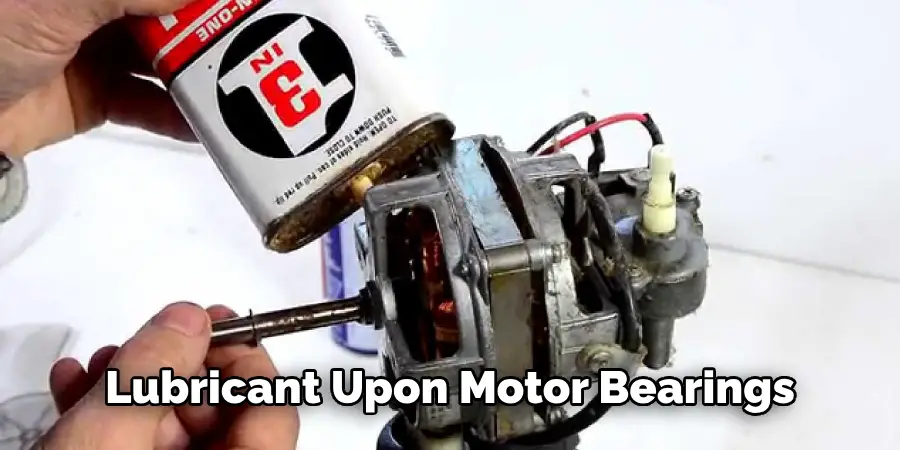
Method 7: Adjust Fan Speed
Within the realm of exhaust fans, the concept of speed echoes with significance. Excessive speed can often manifest as turbulent airflow, a precursor to the flapping noise. Should your exhaust fan offer the luxury of adjustable speed settings, explore the art of moderation. Lowering the fan speed can yield a twofold victory – the reduction of turbulence and the potential for a quieter operation overall.
Method 8: Install a Backdraft Damper
In the intricate choreography of airflow, the presence of a backdraft damper can be a powerful ally. This humble device stands as a gatekeeper, permitting the flow of air in one direction while staunchly opposing its return. Particularly effective in areas subject to variable air pressures or gusty winds, a backdraft damper can eradicate the flapping sound at its very source.
Method 9: Check for Fan Blade Damage
Fan blades, the heroes of the exhaust fan’s performance, are not immune to the passage of time. Warping, cracks, bends – these are the hallmarks of wear and damage that can wreak havoc on the symphony of airflow. Cast you r gaze upon the fan blades, embracing the role of a discerning investigator. Should your gaze land upon damaged blades, summon the spirit of replacement. Replace these weary warriors with fresh counterparts, thus ensuring that the ballet of airflow is both unimpeded and harmonious.
Method 10: Consult a Professional
Should the symphony of flapping persist despite your concerted efforts, the time has come to embrace professional assistance. An HVAC technician, a maestro in the realm of exhaust fans, stands ready to conduct a thorough evaluation. This expert evaluation extends beyond mere surface observations, delving deep to unearth underlying issues that elude the untrained eye. With their guidance, a comprehensive solution is unveiled, restoring the exhaust fan to its rightful role as a conductor of quiet and efficient airflow.
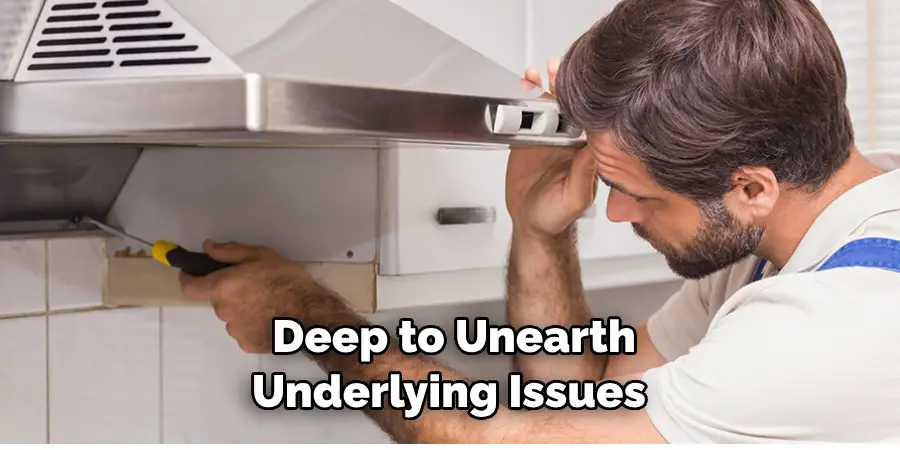
Conclusion
With the right diagnosis, you can easily tackle the flapping sound coming from your exhaust fan. Whether it’s in need of some tightening or realigning, a few simple adjustments could make a world of difference. Make sure to check all the parts and components for any damage to ensure that your exhaust fan is operating correctly.
You should also review your installation instructions from time to time if you wish to perform additional maintenance checks yourself. So there you have it – tackling how to stop exhaust fan flapping doesn’t have to be an endlessly frustrating affair. Now, don’t delay any further – grab your tools and get ready to finally eliminate that pesky noise in you kitchen or bathroom today!
You Can Check It Out To Air Out a Room without Windows

